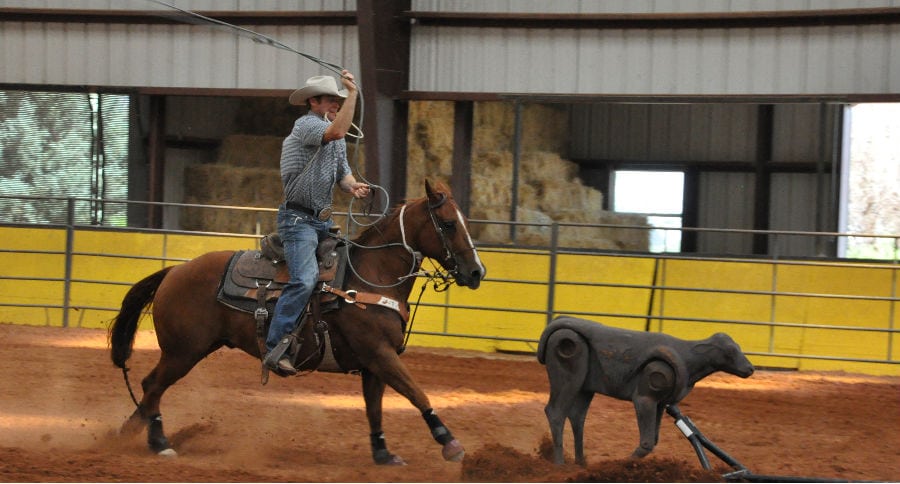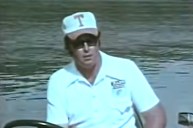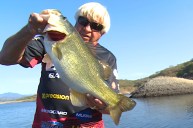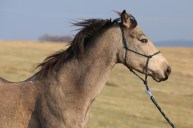We head to Texas to talk with real life cowboy Tyson Durfey about rodeo, ranch life, and of course, Polaris RANGER.
It was a hot and humid mid-September Monday on Tyson Durfey's ranch outside of Weatherford, Texas. But he didn't seem to notice.
The Missouri native's 2016 Tie-Down Roping World Champion gold belt buckle glinted in the Texas sun. This day was a rare treat; he was home for only the second time since the beginning of June.
Durfey has spent the last 15 years on the Professional Rodeo Cowboys Association (PRCA) Tour, and it's not an easy profession.
"Last Sunday I drove straight through from Seattle, Washington home," Durfey said. "That was 2,100 miles. I got home on Wednesday. We spent Wednesday here and then we left."
"We" refers to his wife, Australian country music star and barrel racer Shea Fisher, and their two-year-old daughter Praise Royal. The two accompany Tyson everywhere he goes, to the tune of 75,000 miles a year on average. After one night at home, their next stop was Abilene on Thursday and then off to Albuquerque, New Mexico.
On Sunday, they drove back to Texas just so Tyson could be home on Monday and Tuesday for more interviews, videos, and photos with Polaris, one of his major sponsors. For him, it's all just a part of the job.
A real American success story
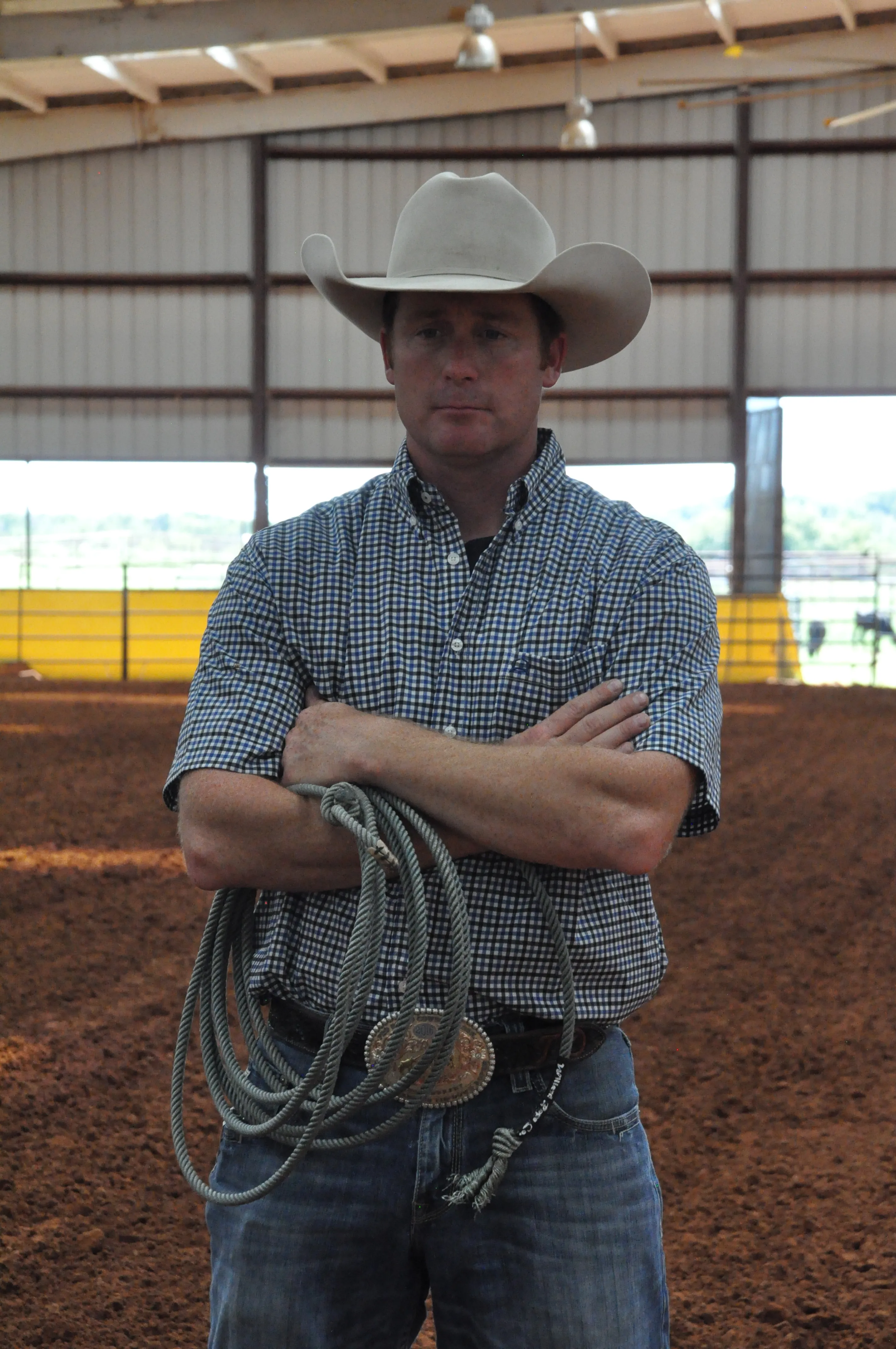
Travis Smola
Durfey is one of the rodeo world's top superstars. Extremely popular with fans and sponsors alike, it's not hard to see why after spending just a few minutes with him, observing what he does and how he interacts with people. The man radiates positive energy and has a can-do attitude that's simply contagious.
He's also not hard to spot at most competitions. He began wearing pink in support of breast cancer awareness a few years back, and now the color is like his trademark at every rodeo he attends.
Another part of Tyson's soaring popularity is his inspiring story of starting at the bottom and working his way to the top of the rodeo world. It's a true American Dream success story.
"My junior and senior year of high school, I would wake up at 4:30 in the morning and practice my flanking and tying for two hours before I went to school," Durfey said. "Then I'd get out of school and shoe two or three horses, make a couple hundred bucks, and then come home and rope until 10 or 11 at night."
Fair to assume it worked. He won the state title in the Missouri High School Rodeo competition twice, and believes those extra hours made the difference between himself and the kids who never made it to the pro level.
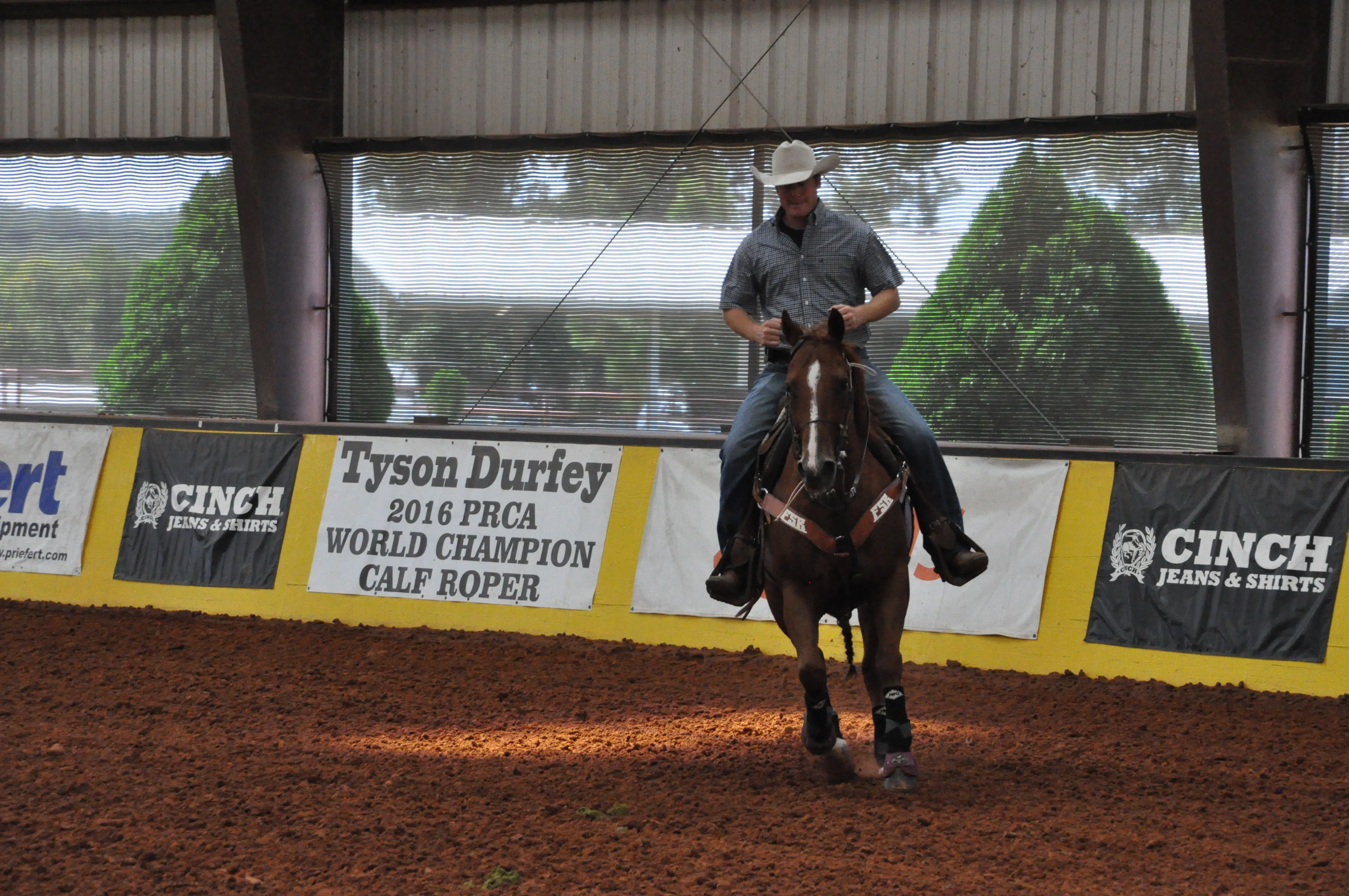
Travis Smola
Durfey decided to hit the pro tour circuit shortly after high school. The expenses quickly added up, enough to max out his credit cards to $25,000 at one point. As luck would have it, Canada had recently opened some of their major rodeos to U.S. citizens.
Durfey headed north, mainly because he could make it to over 40 rodeos over the course of one summer for a fraction of what it would cost in the United States. He was still skating on a razor-thin margin of error.
"I had no idea how I was getting back to America," Durfey said. "I had to win. The next day I won $5,000."
A string of more victories followed. Durfey would win a few thousand dollars here and there, and it helped jumpstart the rest of his career. He made history along the way by becoming the first non-Canadian citizen to ever win the Canadian World Championship in 2014.
For approximately seven years, he didn't really have a home. One week Durfey would be roping at the National Finals. The next he would find himself back in Texas, cleaning stalls and shoeing horses in exchange for a place to stay. "The whole time I was building assets and I was saving. I really wanted a place like this," Durfey said, referring to his ranch.
While trying to gain the advantage of sponsors, he estimated he got maybe one "Yes" for every 25 companies who said "No." He persisted, and is now incredibly thankful for partnerships with Polaris and a number of other companies.
In 2016, Durfey finally reached the pinnacle of the tie-down roping world by winning the World Championship at the Super Bowl of rodeo, the Wrangler National Finals Rodeo (WFNR) in Las Vegas.
"Becoming the world champion for me was all about hard work, and it paid off," Durfey said.
Now he's consistently near the top of the PRCA World Standings. The WNFR win came shortly after Shea and Tyson had welcomed daughter Praise Royal into the world, making 2016 a pretty good year to say the least.
Training to be champion
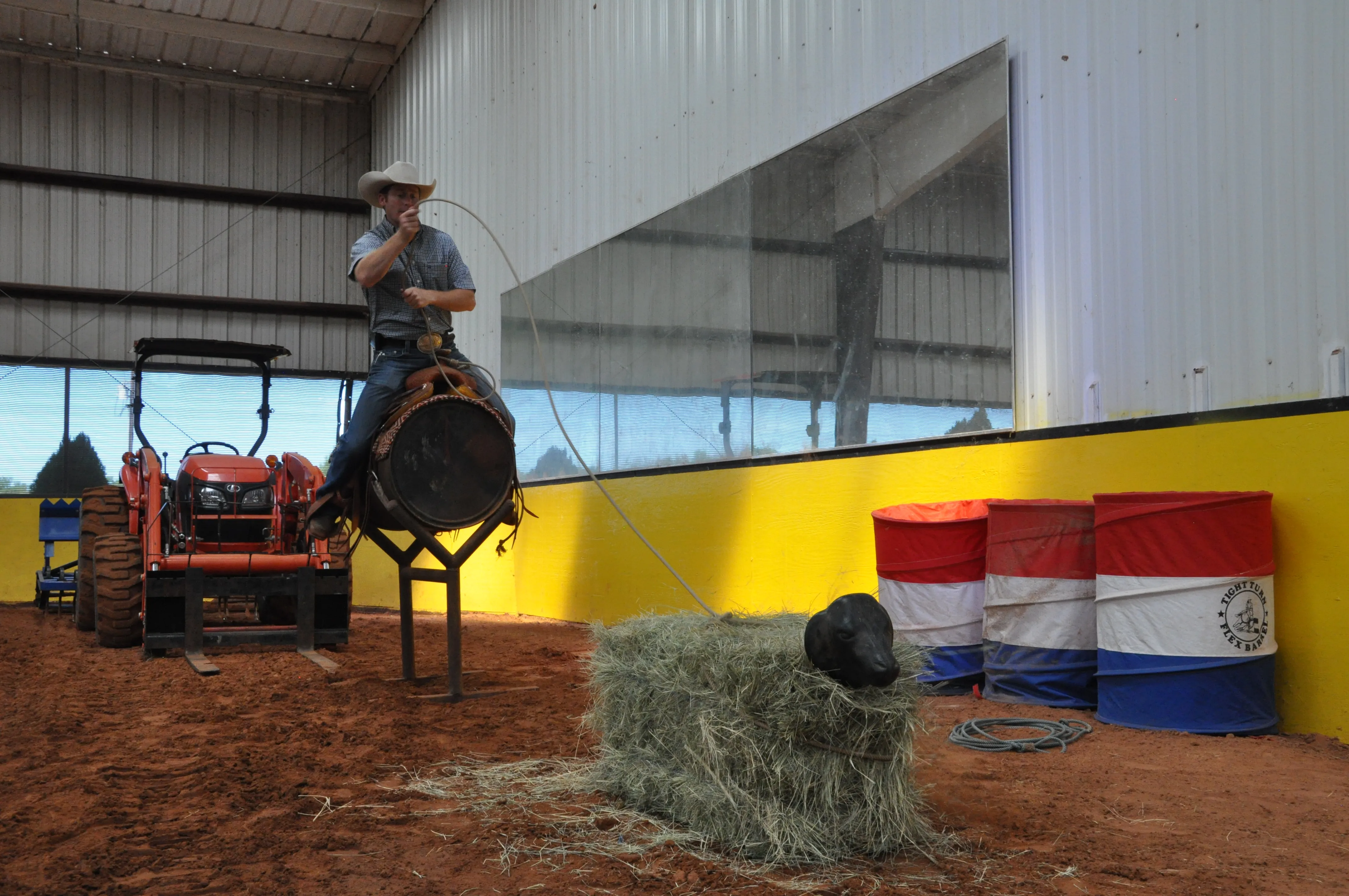
Travis Smola
Pro rodeo might seem like a fun and easy profession at first glance. In fact, the stereotype of the drunken, partying cowboy still persists. Durfey suspected the depiction of rodeo in popular culture may have something to do with it.
In 1994, the popular movie "8 Seconds" romanticized bull riding in typical Hollywood fashion. The bio-pic introduced audiences to pro rodeo by highlighting the life of Lane Frost, the 1987 PRCA World Champion bull rider.
Frost tragically died in the rodeo ring after being gored by a bull just two years after his big world title win. Today, Frost's family has been on record saying the movie highly dramatized aspects of Frost's life.
But the film also depicted the pro rodeo circuit riders as semi-rock stars, complete with copious amounts of alcohol and numerous women waiting for the cowboys in every city they visited. Durfey said there was probably a hint of truth to that, but times have changed.
"Back in the '80s and '90s, guys would do that and that was the culture," he said. "And now it's more about being an athlete. It's about taking care of business. It's about taking care of your sponsors, about taking care of your name."
One doesn't qualify for the NFR by being unfit. Durfey is one of several riders on the pro calf roping tour who doesn't drink alcohol. In fact, these days, a tie-down roping champion's training regime is more in line with something you'd see from a top player in the NBA, MLB, or NFL. In fact, Durfey has trained with five-time Pro Bowler and three-time Super Bowl champion tight end Jay Novacek in the past.
His daily routine is more rigorous than you'd think.
"I'll get up, eat breakfast—something really light, like a banana," Durfey said. After that he might have some water or a cup of coffee, then he spends two hours working up a serious sweat in his weight room, which he installed in his non-air conditioned barn. This is made all the more easier due to the 100-degree temperatures common to this part of Texas.
Next, it's on to actual rodeo training. Durfey works on every minute aspect of tie-down roping. He might spend two hours sitting atop a propped-up barrel, roping bales of hay fitted with a calf head. This training regime may look funny, but he swears by it.
"This is just one of the things that I do that took me from being a top-10 guy to being one of the top one or two guys consistently," Durfey said as he slung a rope at the "calf" so fast you could barely see it.
The exercise allows him to hone that speed and get the feel for the different lengths of rope he may use. He can practice his two-, three- and four-swing throws. By the time he's finished, his ranch manager Kevin will have his two horses, Mitch and Nikko, saddled and ready to train.
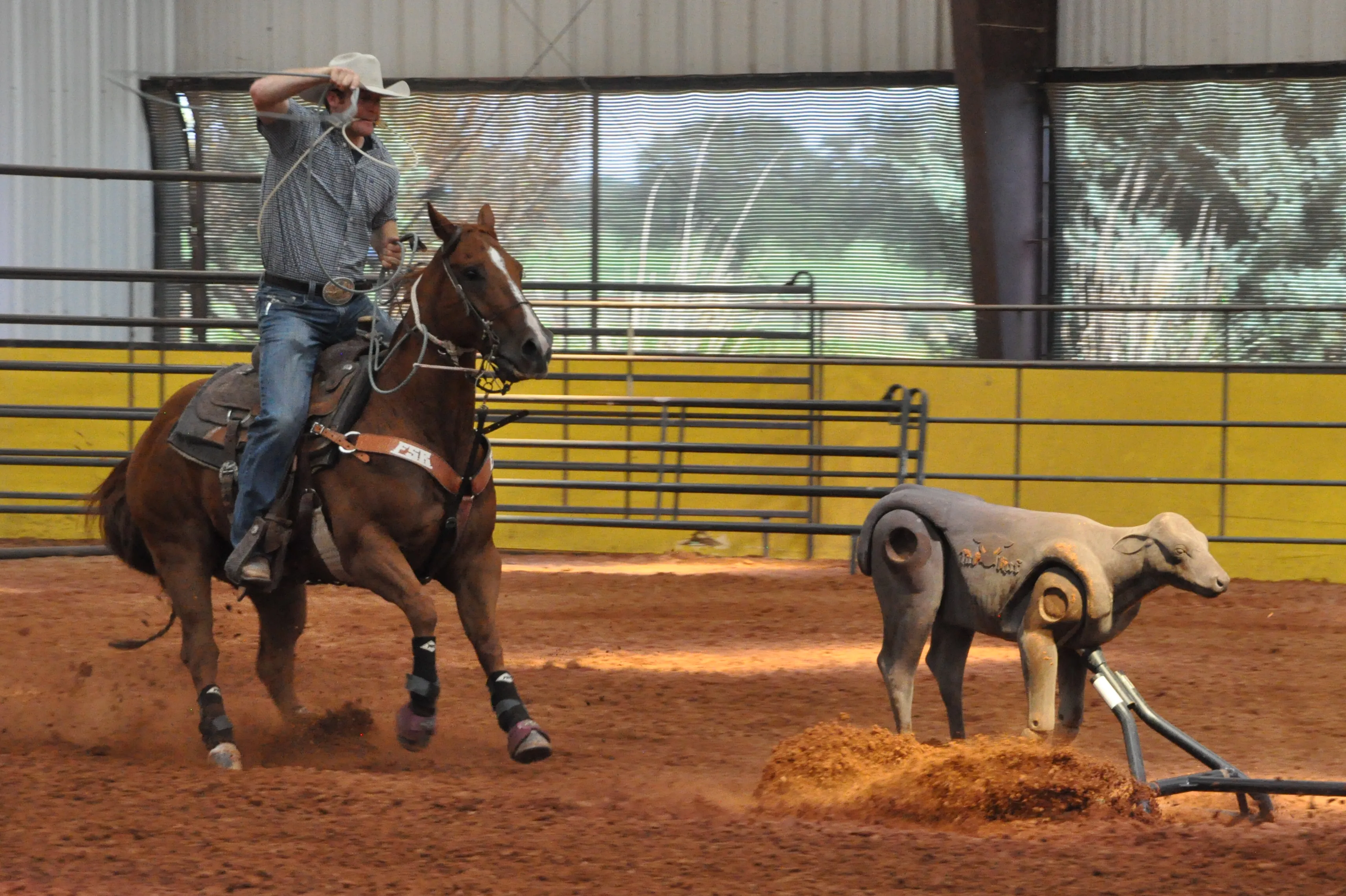
Travis Smola
While he does practice with live calves, a plastic Tough Calf pulled behind a Polaris RANGER is even more vital to a professional calf roper's success.
"Say my horse is weak going to the left," he said. "I can create 10 left hand runs with that dummy and my RANGER. With a calf, if I was to rope 10 calves, I might get one that goes left.
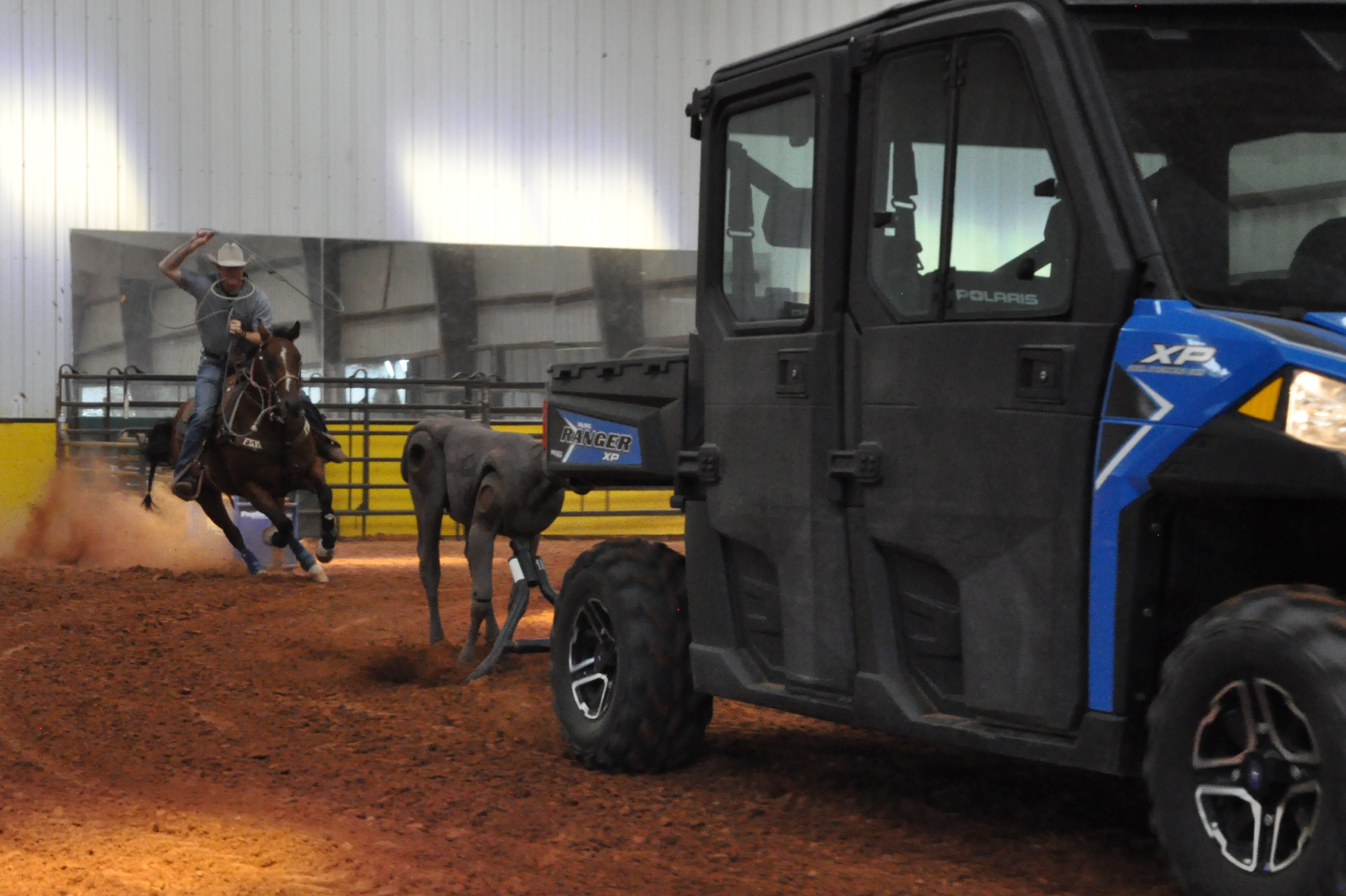
Travis Smola
"I can really exploit my weakness and my horse's weakness and make them better because I'm able to recreate that run every single time," he added.
When he's on the road, the training regime is a little different. Durfey works a lot on stretching and sprints. He keeps a set of adjustable weights and resistance bands in his RV, as well as a set of boxing gloves and pads to hit.
Durfey used to have gym memberships all over the country, but it became more difficult to go to them once he got his RV. Now the biggest things he focuses on are getting enough rest and keeping up his routine.
Whatever training he is doing, there is no detail too small to be overlooked when you're working to be a world champion tie-down roper, especially when there's big prize money on the line.
Surprisingly, Durfey told us there's really no bad blood between competitors. In fact, he said they all want to face each other at no less than the top of their game.
"I want Shane Hanchey or Tuf Cooper to be the best that they can be and to rope as good as they possibly can," Durfey said.
He's even willing to pitch in to help them if they need someone to push their calves or shoe a horse. The mutual respect and camaraderie of tie-down roping extends across the different PRCA rodeo events too. He speaks especially highly of barrel racing legend Lisa Lockhart.
"She's the most humble, kind, down-to-earth, hardworking woman you'll ever meet," Durfey said. "And, she doesn't look at herself the way those girls [her fans] look at her.
"We're professional athletes and yes, we want to be the champ, but we're all just people trying to make a living, too," he said. "I don't think I'm any more special than the next guy, and I don't think they think that way either."
Finding a Seabiscuit
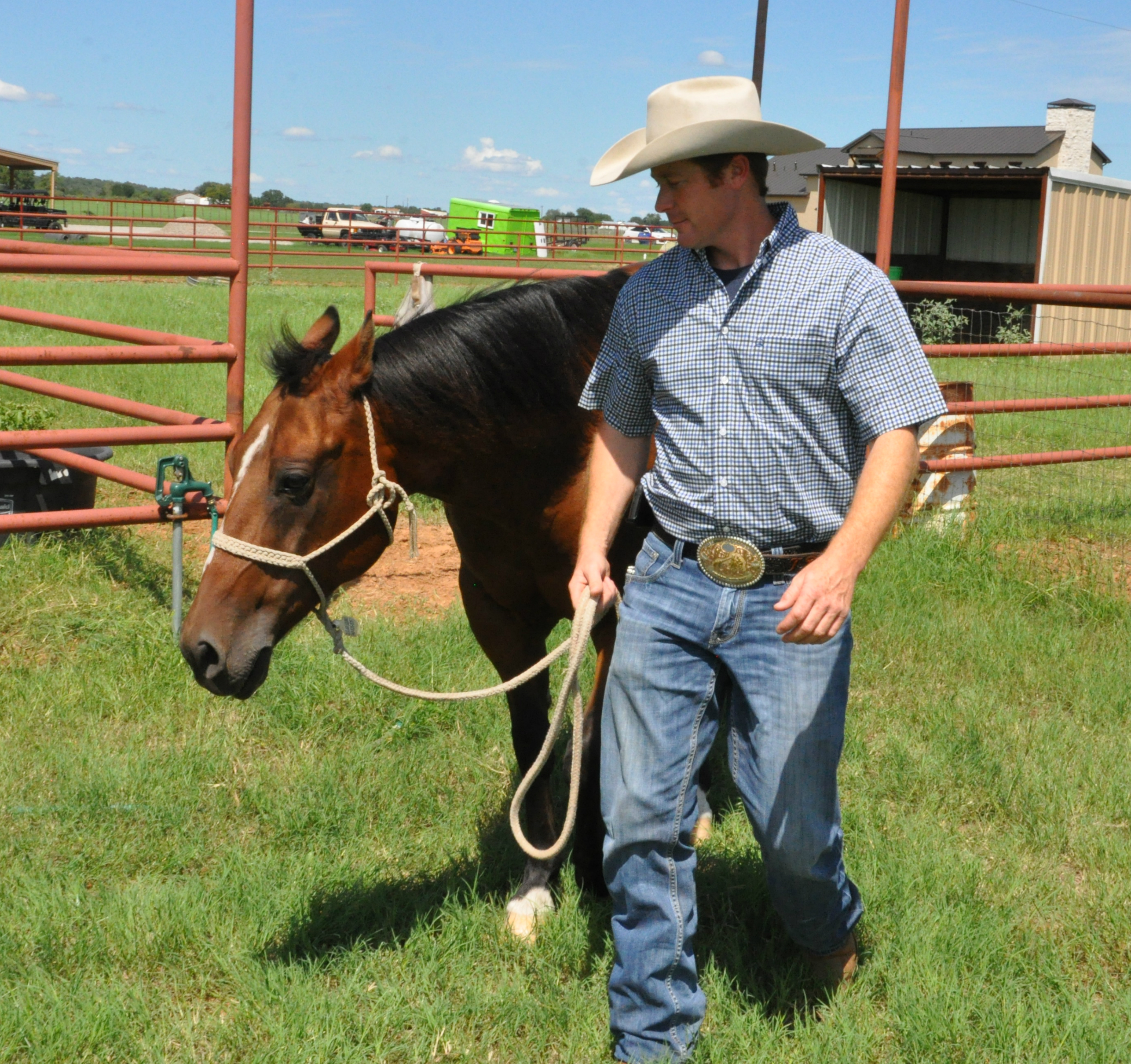
Travis Smola
Of course, no one becomes a champion tie-down roper without a good horse or two. Durfey's prize winner is Nikko. He estimated he's won approximately $700,000 riding him. The beautiful brown horse doesn't immediately look like a rodeo champion. "He's really short and he travels really, really low," Durfey said.
When we visited the ranch, Nikko had spent a couple days off recuperating from the road, and he had put on a few extra pounds. It was mainly due to his grazing on the lush grass in the pasture brought on by 12 inches of rain the area had the week before.
"He looks like he's pregnant," Durfey joked.
But once you get closer and pet Nikko, it's clear that under that beautiful chocolate-colored coat, this horse is nothing but pure muscle and power. Durfey said he looked at Nikko no less than three times before he finally decided to buy him.
"Sometimes I feel like God was just holding him back for me, you know what I mean?" the cowboy said.
Most successful ropers have at least two horses at their disposal. Nikko is first team, while Durfey's other horse, Mitch, is second-string. Nikko is a pretty mellow animal, but Mitch seemed a little more timid and wary around strangers. He was clearly a little easier to unnerve.
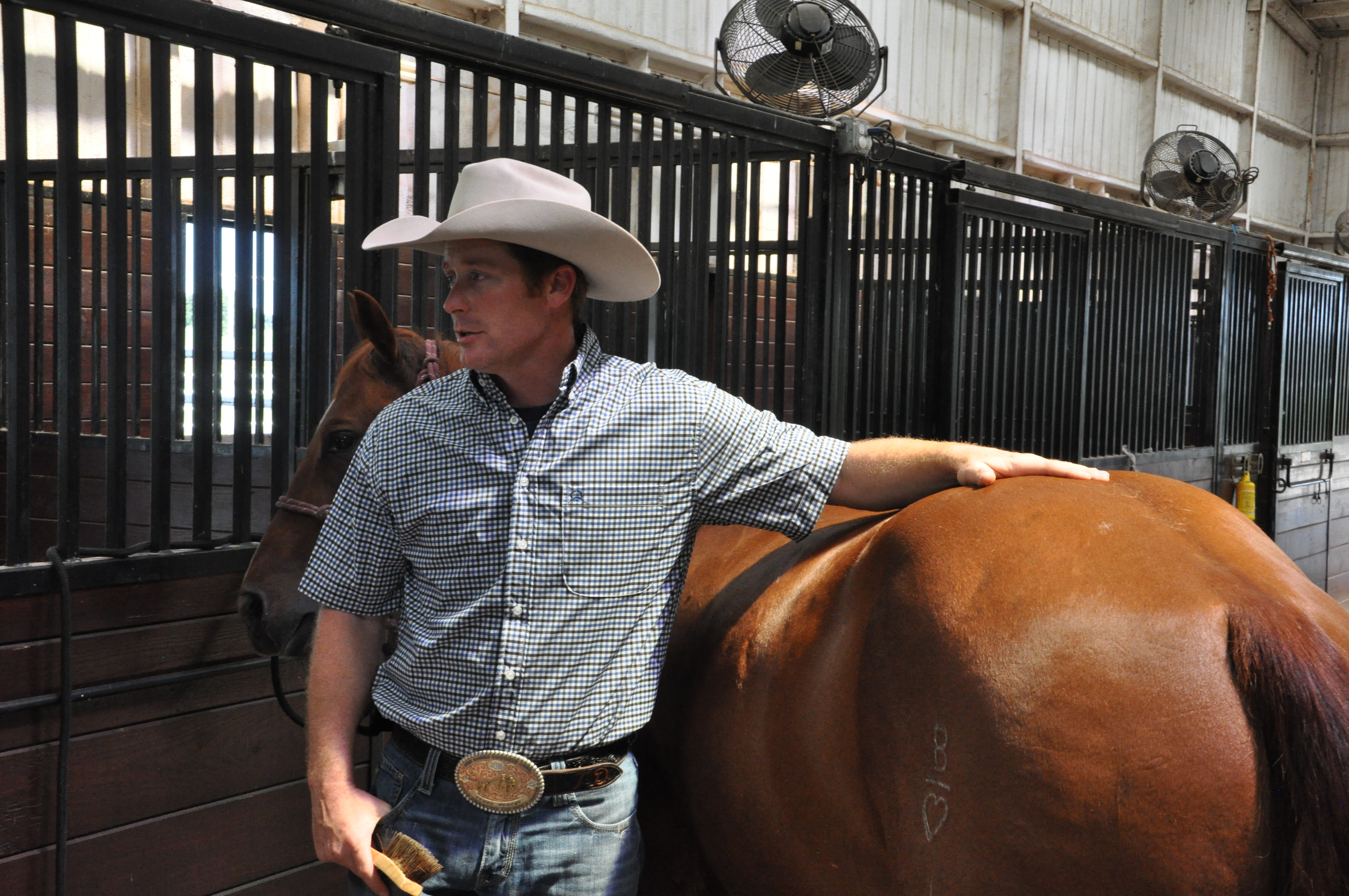
Travis Smola
Once Durfey finally got Mitch going on a practice run after the Tough Calf, he was all business. Durfey said Mitch usually gets the call in rougher conditions like deep mud.
Durfey said there are only 12-15 horses in the country that can do what Mitch and Nikko can do. As he brushed Nikko, he gave him some high praise.
"Finding a horse like this is like trying to find a Seabiscuit," he said.
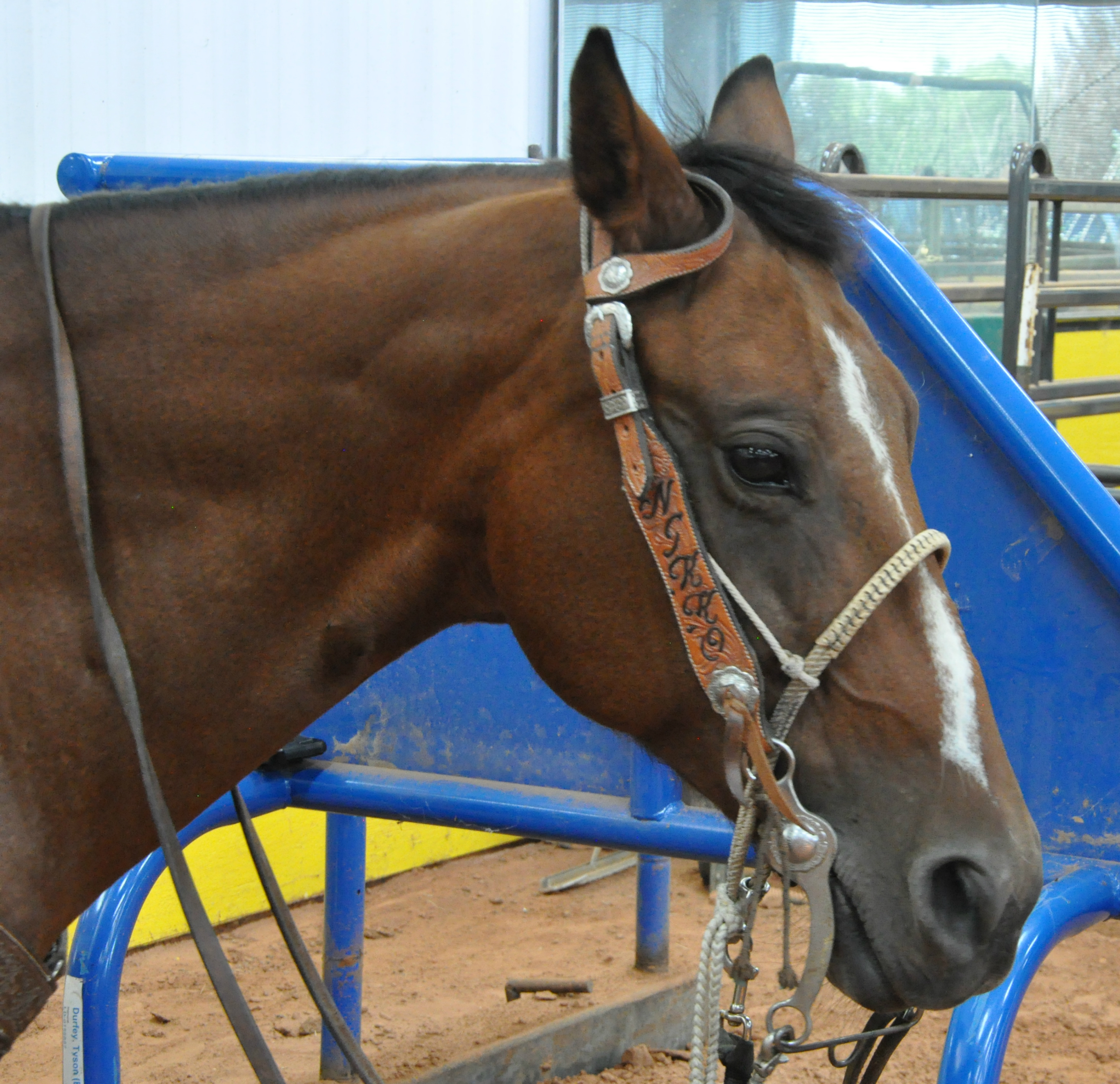
Travis Smola
Perhaps nothing proves Durfey's love for his horses better than the story of an accident with his old horse, Ranger. One day he was shoeing Ranger in a shed with a low ceiling. Ranger was nervous and suddenly reared up and hit his head on a low-hanging truss.
"He fell over and I thought he was gone," Durfey said.
The veterinarian gave a diagnosis of a broken cranium and told Durfey he needed to put the horse down and call the insurance agency. But he refused, insisting the money was easier to replace than the animal. For eight months, he worked to rehab the horse. Slowly, Ranger's mind came back.
Durfey used Ranger in some more competitions, but unfortunately the accident also robbed the horse of some of the top-end speed needed for professional tie-down roping. That was when he heard about a kid who needed a good rodeo horse. Now Ranger competes with the boy in junior rodeos.
"I paid a small fortune for him and sold him for nothing," Durfey said. "It honestly means a lot to me that they send me videos of the junior rodeos and I can see he's doing well and he's happy."
While his skills with his horses are impressive, Durfey is pretty humble about it.
"I feel like I'm still learning. Learning in horsemanship is probably the toughest thing there is," he said with a determined look in his eye.
There are no chauffeurs in pro rodeo
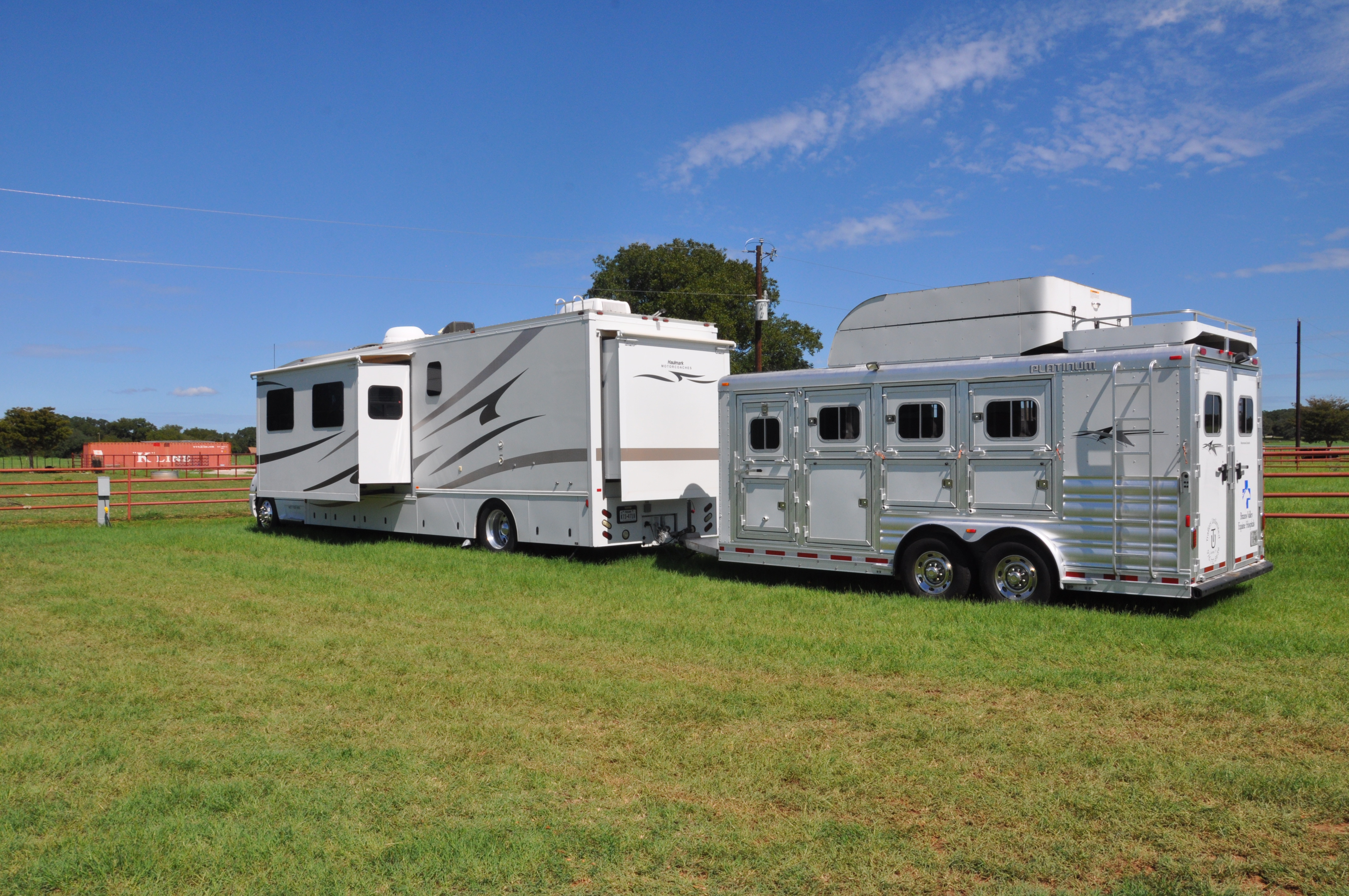
Travis Smola
The rodeo lifestyle isn't for everyone. It's a 12-month season that starts in October and runs through the following September. There's barely a moment to catch your breath before you're off to start the new season. The limit is 100, but Durfey figures he'll compete in 80-85 rodeos this year, equaling about 250 or more days on the road.
The horses can't just hop on a plane like humans can, so that means a lot of driving. And there are no hired chauffeurs in pro rodeo. Durfey does up to 70,000 miles of driving each year on his own.
"Sometimes I'll be driving out the driveway and I'll just scream at the top of my lungs," he said.
But Durfey is one of the lucky ones on the tour. His wife and daughter accompany him, and since they needed a place to stay between events, he bought a large RV. The vehicle even has a deep freezer which helps the small family to avoid the temptation to eat out all the time.
He's a firm believer in sports psychology, and that the road is just one aspect of that. When it comes to the next 1,500-mile drive, he said it's best to just put it out of your mind and get going.
"At the end of the day, you just don't let your mind go there," he said.
Durfey lives by a pretty good principle: the more you focus on what you don't want to do, the harder the task becomes. And that applies to all aspects of life, not just driving to rodeo competitions.
After 15 years, he knows his routes pretty well. Now he has a good idea of all the best stops before he leaves, which makes things a little easier.
At the end of the day, Durfey said he can deal with life on the road because it was the path he chose in life. He still loves it, and seemingly always will. The road is admittedly harder on the animals. He noted that a horse might only be actually competing for 8-10 seconds in the ring. But then it faces a 24-hour-or-more drive to the next competition.
"It's not the competition that hurts the horses, it's the miles," he said.
Texas, Polaris RANGER, and Ranch life

Travis Smola
In a lot of ways, Tyson's adopted home state of Texas is the central point for pro rodeo. When Durfey first moved there, he didn't know anyone, but he found out quickly what "Southern hospitality" means. While putting up a fence in his yard, people were constantly stopping to introduce themselves and welcome him to the area. He fit right in with the crowd of ranchers and rodeo goers.
"If you like rodeo and horses and stuff, it's such a great state," Durfey said.
At a 2013 event, Durfey badly wanted to win a Polaris RANGER that was being given away as a prize. In fact, he wanted it more than the prize money. So much so that his significant other was questioning his intentions. "My wife was like, 'What is your deal with this?'" Durfey said.
He already had a ton of work uses in mind, and when he won the event and took home the RANGER, it was the beginning of a long-lasting relationship.
Polaris eventually became a major sponsor, but Tyson likes that it isn't just a company name to thank in an interview at the end of a run. He actively uses Polaris machines on his ranch, in both his training and regular farm work, like cleaning stalls, dragging arenas, and carrying firewood and hay bales around.
The first RANGER he won still sees use every day on the ranch. In fact, he said it hasn't been back to the dealership with a single problem since.
"It's been an astonishing machine," he said.
The family loves the side-by-sides so much, they even sent one to Australia for Shea's family.
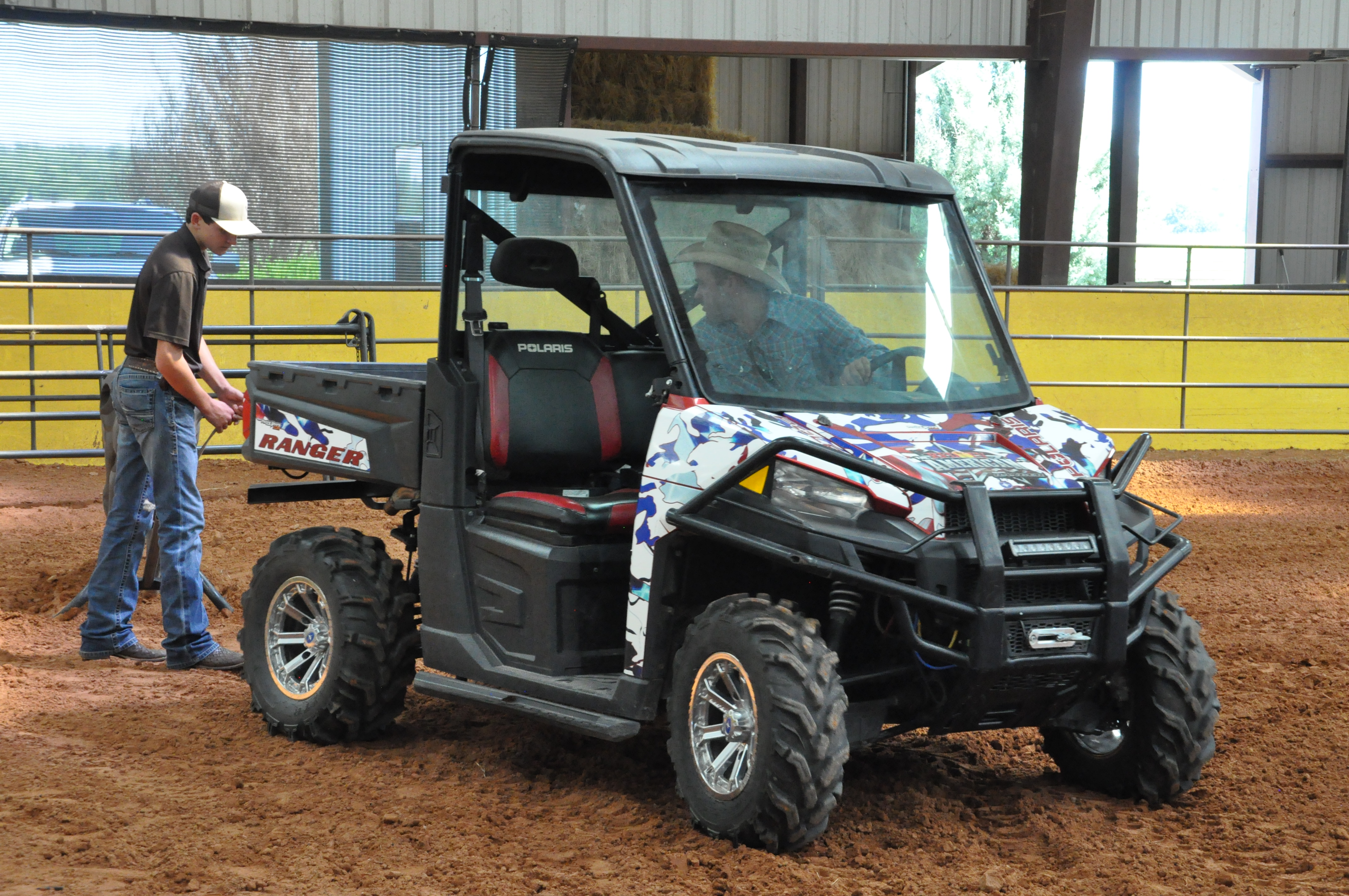
Travis Smola
Durfey and his family haven't even been on the ranch for a year yet. His father-in-law found the place for sale on the internet, and they partnered 50-50 on it. The way things worked out is enviable to anyone who's ever bought or sold a home.
"We found it, decided we were going to buy it, and sold our place in one day on Facebook," Durfey said.
They moved in a few days before Christmas. For now, the family lives in a modest home that'll become home to his in-laws once he gets around to building his dream house nearby. He already has the spot picked out: a lush pasture behind his training arena next to a flag pole proudly flying the stars and stripes. Behind that, Durfey's property ends with a wooded area that butts up to the slow-moving Brazos River.
Durfey led us on a horseback tour of his property, and he took us down the sandy river banks to an almost perfect swimming hole. It's in a bend where the river is deep, and he said they'll often use the bed of the RANGER as a diving board!
The waters of the Brazos are filled with sand bass and, surprisingly enough, crappie. But on more than one occasion, Durfey has been startled by the sudden, brief appearance of the gigantic alligator gar that also call the waters home.
It's here on the ranch that Durfey takes every opportunity he can to unwind. He likes to hunt and fish, although he admits he doesn't get to do a whole lot of either due to his schedule. This particular area of Texas is loaded with whitetail deer, but they haven't seen any bucks of notable size just yet.
In fact, the buck-to-doe ratio is a bit out of whack, which he hopes to address this fall. One evening alone, he counted 75 does feeding in one pasture.
This shouldn't be surprising (it's Texas), and most of the hunting he's done so far has been feral hog eradication. Controlling the pigs is especially important on a horse ranch because the hogs dig ruts and holes that could lead to a horse hurt its leg with a missed step.
Other than hunting, Durfey has some really ambitious goals for things he'd like to do in outdoors in the future, like hiking to Mount Everest basecamp in Nepal.
"Everest just keeps sticking in my mind," he said. Shea isn't a huge fan of that idea.
Crazy bucket list aside, he's found that just spending time in the outdoors and on his ranch gives him a chance to recharge the batteries.
"It takes my mind off the training, the practicing," he told us. "I feel like when I'm fresh in my mind, I get more out of my training and practice."
Proud parents and life after rodeo
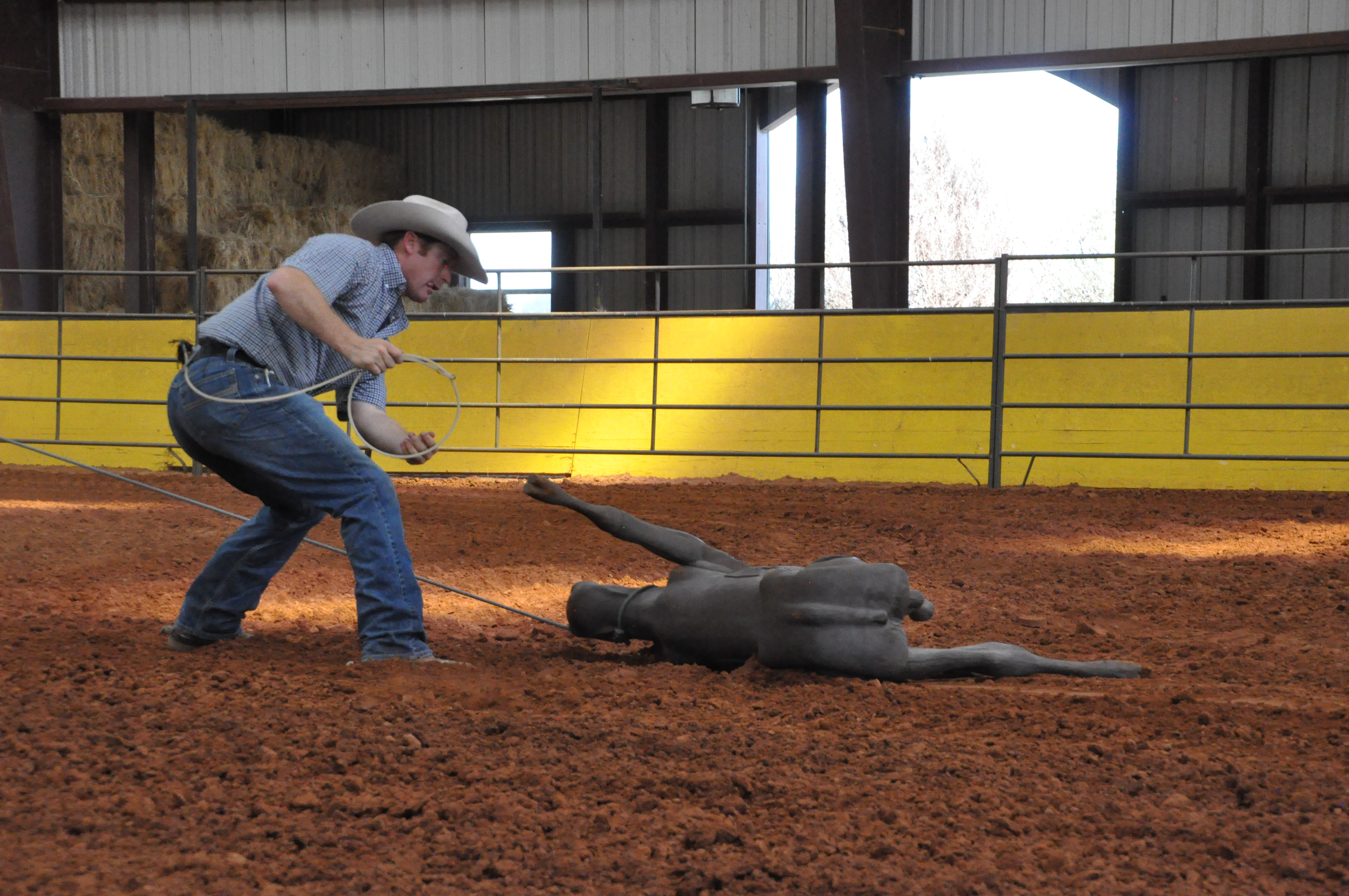
Travis Smola
As Durfey led our group of horses back to the barn after our ride, Praise spotted her father and shrieked excitedly: "Daddy!"
Praise's bond with her father is close, and he's one proud papa. Praise seemingly got upset every time Tyson is out of her line of sight for more than a few moments. After dinner, Durfey took us down to the river again in one of the six-seat Polaris RANGER for a sunset campfire on the river bank.
When Shea arrived a few minutes later, Praise again yelled "Daddy!" and then made a beeline for the water. It wasn't a bad idea on a hot Texas afternoon. The two parents took turns keeping an eye on her and making sure she didn't wander too deep, just like a responsible mom and dad should.
AS they usually are, the campfire was a great place for shared stories and laughs that warm evening. Some of us visiting the ranch had only met earlier that morning, but the way the Durfeys treated everyone, it felt like a group of old friends.
From the smiles on Tyson and Shea's faces, it was clear this little patch of Texas is their idea of heaven on earth.
Praise spends a lot of time with her Australian-born mother and grandparents and at times, the two-year old's developing vocabulary has an interesting sound that's both American and Australian.
"I'd love for her to have an accent," Durfey said with a big smile.
Since his daughter is two years old and growing fast, Durfey told us he'll likely retire from the road-warrior rodeo lifestyle once Praise is old enough to go to school.
"No amount of money on the pro tour, or championships, world titles—it's not worth it to me, not if I've got to miss my family," Durfey said.
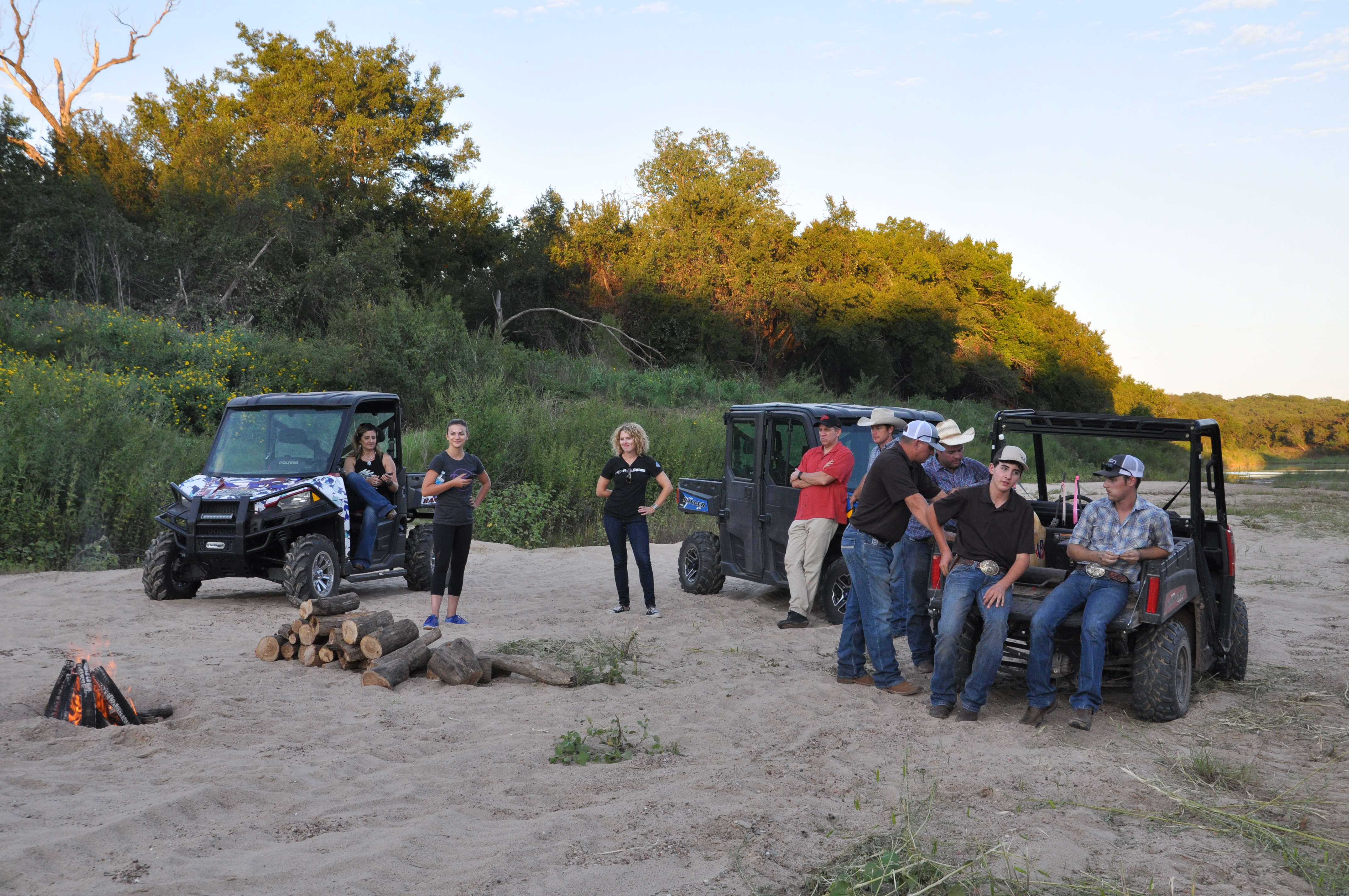
Travis Smola
Durfey said he'll likely not quit competing entirely, but he'll likely slow his schedule down to only about 40 rodeos instead of 80. He accepts that rodeo, like any pro-level sport, is a short-term deal. But he's ready for that, and has plenty of irons in the fire. His wife's company, Shea Michelle Buckles, designs and makes rodeo buckles and variety of jewelry and ornate knives with custom designs from both Tyson and Shea. Tyson himself has a signature line of corral boots and jackets.
He has also taken a liking to motivational speaking, and has booked a few gigs to see how he likes the practice. There are hopes to host tie-down roping clinics at his ranch eventually. He plans to do some of that clinic work right on the side of the river we stood beside.
"It's a love," he said. "You can't give up something you love."
That's apparent, as is the fact that this guy knows what he's doing, in more ways than one.
NEXT: POLARIS SHOWED US WHY THE NEW RANGER XP 1000 IS THE IS THE ULTIMATE REC VEHICLE
